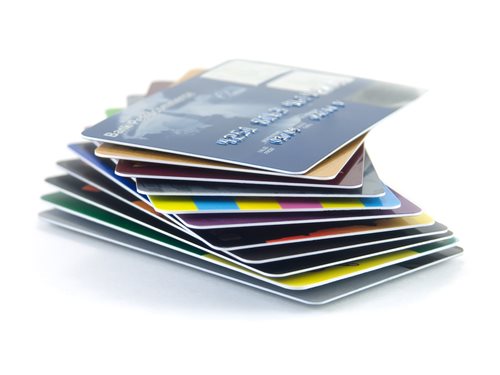
Auctions have existed for centuries, and they have remained a significant part of the world’s economy. People have been using auctions to sell and buy properties, goods, and services for a long time. Even with the rise of digital platforms, auctions remain an important part of the modern economy. In this article, we’ll dive deep into what you must know about auctions.
What is an Auction?
Auctioning is a method of selling merchandise to the highest bidder. It’s a process whereby a seller sets a minimum price they would accept for an item, and then buyers place bids, driving the price up until it reaches the maximum amount that someone is willing to spend. The highest bidder then wins the auction, and the item is sold at that price. While it’s a simple process, auctions have remained an important part of commerce because they drive competition among buyers, usually resulting in higher prices.
Types of Auctions
There are several types of auctions that are commonly used around the world, and each type has its unique advantages and drawbacks. Below are the most popular types of auctions:
1. English Auctions
English auctions are the most common and popular type of auction used worldwide. They are often used in estate sales, art auctions, and other high-value sales. This type of auction begins with an opening bid, and from there, the bidding begins to escalate until the highest bidder wins. In an English auction, the seller may also set a reserve price, which means that the item will not sell unless the final bid exceeds the reserve amount.
2. Dutch Auctions
A Dutch auction starts with a high asking price. Then, the auctioneer lowers the price until a buyer agrees to purchase the item or the price reaches the lowest price set by the seller. This type of auction is commonly used to sell perishable items such as fresh produce, flowers, and fish.
3. Sealed Bid Auctions
A sealed bid auction is a kind of auction where all bidders must submit their bids simultaneously and sealed. The winning bid then becomes the highest submitted bidder. This type of auction is often used to sell real estate or high-value items where confidentiality is necessary.
4. Reverse Auctions
Reverse auctions are used in procurement for businesses to source the best value products from suppliers. In this type of auction, the seller (the buyer in this case) stipulates the product to be purchased and invites suppliers to submit their bids. The supplier with the lowest bid wins the contract.
5. Online Auctions
Online auctions are the most popular type these days. They’re conducted on digital platforms, allowing bidders worldwide to participate from anywhere, anytime. Online platforms like eBay, Amazon, and Facebook Marketplace have brought auctions closer to everyone, and it’s easy to bid on items from the comfort of one’s home.
Advantages and Disadvantages of Auctions
While auctions have many advantages, there are some disadvantages too. Below are the pros and cons of using auctions.
Advantages
1. Competitive Bidding: When buyers compete in an auction, it typically results in a fair market price for the item being sold. This means that the seller is more likely to get a higher price for their item, and the buyer can acquire the item at a lower price than they might pay in a traditional sale.
2. Fast and Efficient Sales: Auctions are an efficient and quick way to sell items. The process is often completed in just a single day or a few hours, depending on the size of the auction.
3. Wide Range of Goods: Auctions offer a wide range of goods that can be sold, from luxury goods to everyday items.
4. Transparency: Auctions are transparent, and all bidders are treated equally. The process is open for all to see, and no one has an advantage over anyone else.
Disadvantages
1. Time-Consuming: Some auctions can take hours to complete, making them tiring for both the buyers and the sellers.
2. High Fees: Sellers are usually charged a commission fee to participate in an auction. These fees can be relatively high, reducing the profit for the seller.
3. No Guaranteed Sales: Selling at an auction means that there is no guarantee that the item will sell, and if it doesn’t, the seller is still required to pay the commission fee.
4. Dishonest Bidders: Some bidders may try to manipulate the bidding process or collude to keep prices low. This can result in the item going for a lower price than it might attract in a traditional sale.
Buying at Auctions
Buying at auctions can be an excellent opportunity for buyers to purchase items at a lower cost than they might pay in a traditional sale. However, it’s essential to understand how auctions work and what to expect to make the most of the bidding process.
1. Research: Before attending an auction, research the items that you’re interested in. This will give you a better idea of what to expect and what you should be prepared to bid.
2. View Items: It’s important to view the items that you plan to bid on to ensure that you know what you’re purchasing. This can be done in person or online.
3. Set a Budget: Before bidding, set a budget for each item that you plan to purchase. This will help you stay within your limits and avoid overspending.
4. Check the Terms and Conditions: Before bidding, check the auction’s terms and conditions. This will contain information on payments, commissions, and other important details.
Selling at Auctions
Selling at auctions can be an efficient and quick way to sell items, but it’s essential to understand how the process works and what to expect.
1. Organize Items: It’s important to organize the items that you plan to sell to ensure that they are presented effectively and ready for sale.
2. Choose the Right Auction House: Choose the auction house that specializes in the items you plan to sell. This will ensure that your items are promoted effectively and sold to the right buyers.
3. Set a Reserve Price: If you want to ensure that your item is sold for a specific price, set a reserve price. This means that the item will not be sold unless the final bid meets or exceeds the reserve price.
4. Prepare for the Auction: Before the auction begins, prepare for the event by making sure that your items are ready, and you have all the necessary paperwork.
Government Resources on Auctions
Governments around the world regulate auctions to ensure that they are conducted fairly and transparently. Below are links to government resources that provide information on auctions.
1. US General Services Administration (GSA)
The GSA auctions off excess government assets, including vehicles, office equipment, and other items. This website provides buyers with information on upcoming auctions and how to bid.
2. UK Government Auctions
The UK government auctions off seized assets, including cars, planes, boats, and property. This website provides buyers with information on upcoming auctions and how to bid.
3. Australian Government Auctions
The Australian Government auctions off assets, including vehicles, property, and machinery. This website provides information on upcoming auctions and how to bid.
4. European Union Public Procurement
The European Union Public Procurement website provides information on procurement opportunities for businesses across Europe. This includes information on public auctions.
Conclusion
Auctions have remained an important part of the modern economy, and they provide a quick and efficient way to sell and buy items. Understanding the different types of auctions, the advantages and disadvantages, and tips for buying and selling at auction can help buyers and sellers make the most of the process. Government resources provide valuable information on auctions and how they are regulated to ensure fair and transparent transactions.
























